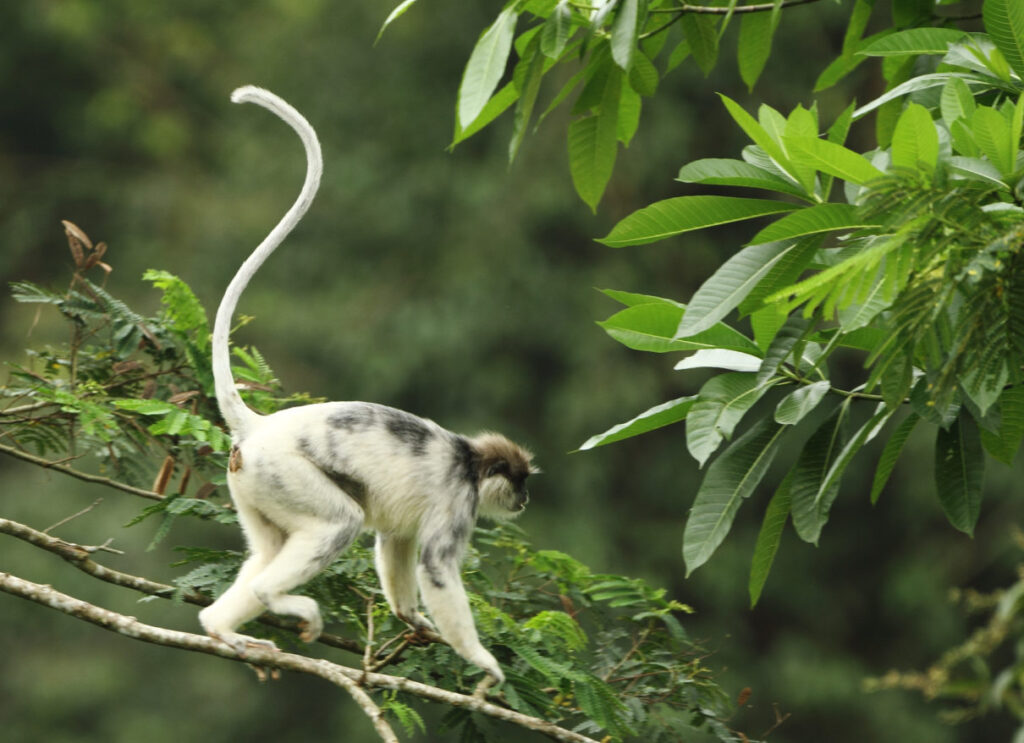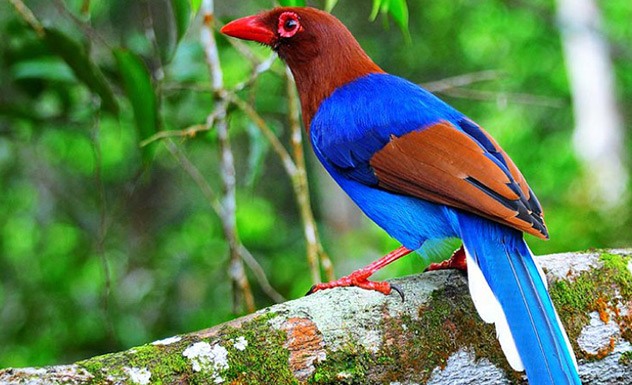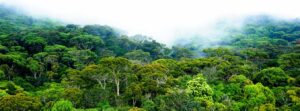The Sinharaja Forest Reserve, located in the southwest region of Sri Lanka, is a UNESCO World Heritage Site and one of the island’s most valuable ecological treasures. Renowned for its exceptional biodiversity and ancient, untouched beauty, the forest reserve stands as a vital refuge for countless species of plants and animals. Let’s delve into the wonders of the Sinharaja Forest Reserve and explore its significance in the realm of conservation.
- Location and Geography:
Situated in the heart of Sri Lanka’s southwestern lowland wet zone, the Sinharaja Forest Reserve spans an area of approximately 8,864 hectares. The forest is bordered by the rivers Gin Ganga and Napola Dola, and its elevations range from 300 meters to 1,170 meters above sea level. This varied topography contributes to the reserve’s rich ecological diversity. - Biodiversity:
The Sinharaja Forest Reserve is a true biodiversity hotspot, serving as a haven for numerous endemic species found nowhere else on the planet. It’s home to a remarkable variety of flora and fauna, including over 50% of Sri Lanka’s endemic species of mammals, butterflies, and birds. Notably, the reserve shelters 34 out of 43 species of birds endemic to the island. Among the iconic species that call Sinharaja home are the Sri Lankan leopard, purple-faced langur, and the elusive red-faced malkoha.


- Plant Life:
The lush forest is an expanse of diverse vegetation, ranging from lowland rainforest to montane cloud forest. Over 60% of the trees here are considered endemic to Sri Lanka, further emphasizing the region’s ecological uniqueness. Giant trees, towering canopies, and a rich undergrowth contribute to the complex structure of the forest. - Conservation Importance:
Recognizing the exceptional ecological value of Sinharaja, UNESCO designated the forest reserve as a World Heritage Site in 1988. The forest plays a crucial role in the conservation of Sri Lanka’s biodiversity, acting as a refuge for species threatened by habitat loss and human encroachment. Preservation efforts have been undertaken to ensure the survival of the countless species that rely on this unique ecosystem. - Ecotourism and Research:
Sinharaja offers a captivating experience for ecotourists, nature enthusiasts, and researchers alike. Managed access points allow visitors to explore designated trails, witnessing the natural beauty and wildlife of the forest. However, strict regulations are in place to minimize human impact and preserve the delicate balance of the ecosystem. - Threats and Challenges:
Despite its protected status, Sinharaja faces several challenges. Illegal logging, agricultural encroachment, and unsustainable tourism practices pose threats to the forest’s integrity. Conservation efforts are ongoing to combat these challenges and ensure the long-term survival of this unique ecosystem. - Future Prospects:
Safeguarding the Sinharaja Forest Reserve requires a combination of conservation policies, community engagement, and sustainable management practices. By promoting awareness, responsible tourism, and habitat protection, stakeholders aim to secure the future of this remarkable treasure for generations to come. - Cultural and Historical Significance:
Beyond its ecological value, the Sinharaja Forest Reserve holds cultural and historical significance for the people of Sri Lanka. The forest has been mentioned in ancient texts and legends, contributing to its mystique. It is believed to have served as a sanctuary for monks and hermits in ancient times, adding a spiritual dimension to its identity. - Research and Discoveries:
The forest has been a site of extensive research, leading to the discovery of new species and the advancement of scientific understanding. Researchers continue to study the flora and fauna of Sinharaja, uncovering hidden aspects of its biodiversity. These findings contribute not only to local conservation efforts but also to global knowledge about rainforest ecosystems. - Unique Ecosystem Services:
The Sinharaja Forest Reserve provides essential ecosystem services to surrounding communities and beyond. It plays a critical role in maintaining water quality and regulating local climate patterns. The forest acts as a natural buffer against floods and soil erosion, making it a vital component of the region’s environmental stability. - Collaboration and Partnerships:
Conservation efforts in the Sinharaja Forest Reserve often involve collaboration between governmental agencies, non-governmental organizations (NGOs), local communities, and international partners. These partnerships aim to pool resources, expertise, and ideas to develop effective strategies for protecting the forest’s biodiversity and addressing ongoing challenges. - Educational Opportunities:
The Sinharaja Forest Reserve offers a unique educational platform for students and visitors interested in environmental science, ecology, and conservation. Guided tours, nature walks, and interpretive centers provide insights into the complex interactions within the ecosystem and the importance of preserving natural habitats. - Sustainable Livelihoods:
For local communities residing in the vicinity of the forest, sustainable livelihoods are intertwined with the well-being of Sinharaja. Eco-friendly tourism, handicraft production, and forest-based activities can provide economic opportunities while aligning with conservation goals. Balancing these livelihoods with conservation efforts is a delicate task. - Climate Change Resilience:
The Sinharaja Forest Reserve contributes to climate change resilience by acting as a carbon sink and preserving biodiversity that may hold key adaptations for a changing climate. Protecting intact ecosystems like Sinharaja can play a significant role in mitigating the impacts of climate change on both local and global scales. - Community Engagement:
Engaging local communities in the management and conservation of the Sinharaja Forest Reserve is crucial for its long-term sustainability. Community-driven initiatives can empower residents to take ownership of conservation efforts, ensuring that their traditional knowledge and practices contribute to the forest’s protection. - Long-Term Monitoring:
Continuous monitoring of the Sinharaja ecosystem is essential for tracking changes, identifying emerging threats, and assessing the effectiveness of conservation measures. Scientific research and data collection contribute to evidence-based decision-making for the sustainable management of the forest.
In summary, the Sinharaja Forest Reserve is far more than just a physical expanse of trees and wildlife. Its story encompasses cultural, historical, ecological, and economic dimensions, all woven together in a complex tapestry. As the world grapples with environmental challenges, the Sinharaja Forest Reserve serves as a reminder of the importance of preserving Earth’s natural wonders and the intricate connections that bind us to the natural world.



